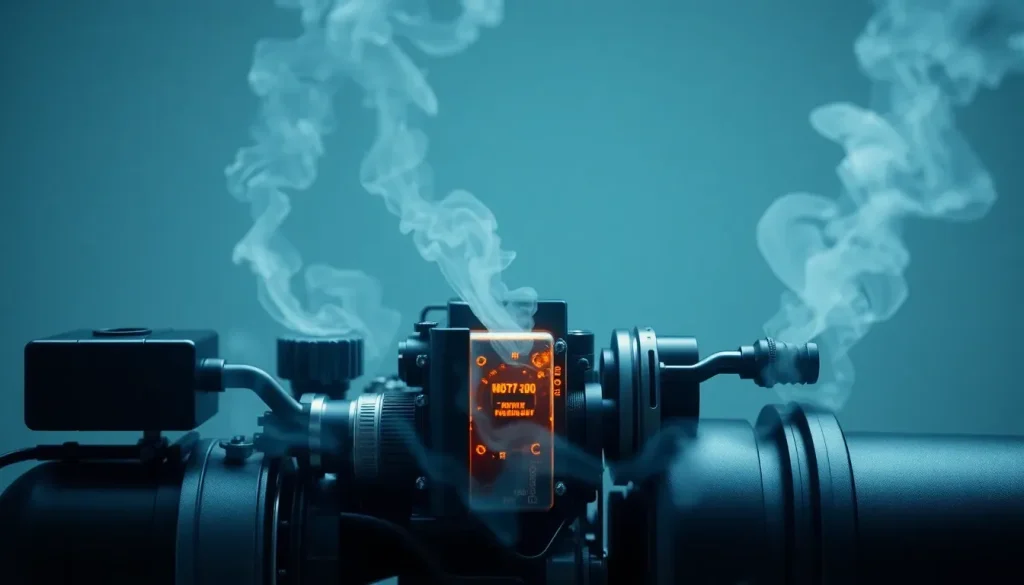Navigating Uncertainty in Diesel Engine Emissions for 2027

The road to 2027 emissions standards is filled with uncertainty, but one thing is clear: fleet managers need to act decisively. The clock is ticking, and as regulations loom, proactive measures will be key to maintaining efficiency and compliance. Leaders in the trucking industry, like Volvo Trucks North America President Peter Voorhoeve, are urging fleets not to wait too long.
“In these uncertain times, my best advice is to purchase compliant trucks now,” Voorhoeve emphasized during a recent interview at the ATA Management Conference & Exhibition. “These trucks are efficient and beneficial for your bottom line, positioning you well for the future.” This perspective cuts through the fog of speculation surrounding the upcoming regulatory landscape, encouraging fleet operators to prioritize stability over hesitation.
Understanding the Upcoming Changes in Diesel Emissions
Voorhoeve stressed the importance of distinguishing between two critical regulatory areas affecting the trucking industry: greenhouse gas (GHG) regulations and nitrogen oxides (NOx) emissions. “It's crucial to separate these two factors,” he noted. “The GHG rules focus on CO₂, while the 2027 regulations specifically target NOx emissions.”
The anticipated shift in NOx emissions standards will raise the allowable limit from 0.2 to 0.235 grams per brake horsepower-hour. Although this change might seem minor, the implications could be significant. Factors such as testing protocols, aftertreatment systems, and warranty conditions could introduce a level of unpredictability that fleets must navigate.
Given this uncertain environment, now is a strategic moment for fleet operators. Acquiring trucks that comply with existing regulations not only ensures reliability but also allows for predictable operating costs. Fleet managers can benefit from:
- Enhanced uptime without the looming anxiety of upcoming compliance changes.
- Clear understanding of current vehicle performance and reliability metrics.
- Financial predictability, as stable operating costs can significantly impact profitability.
In this context, making informed buying decisions can lead to improved operational efficiency and a competitive advantage.
Strengthening Manufacturing Base for Future Compliance
Volvo's commitment to local manufacturing plays a critical role in its ability to adapt to evolving emissions standards. Voorhoeve proudly stated, “We have been a U.S. manufacturer since 1982 and will continue to prioritize our Virginia operations.” This long-standing dedication not only affirms their commitment to local economies but also enhances their compliance with the United States-Mexico-Canada Agreement (USMCA).
This domestic manufacturing strategy ensures that Volvo can quickly respond to changes in regulations, maintaining components' availability and service continuity. For fleet managers, this translates into reduced logistical challenges and increased uptime, which is vital for protecting revenue streams.
The advantages of choosing a manufacturer with a strong domestic presence include:
- Quicker access to parts and service.
- Minimized delays in logistics and supply chain management.
- Enhanced reliability stemming from familiar production practices.
New Product Lineups: A Step Towards Compliance
Moving beyond regulatory discussions, Voorhoeve highlighted the exciting advancements in Volvo's vehicle offerings. The company's renewed V-series lineup, including the recently launched VNR and VNL models, represents a significant leap forward in fuel efficiency and driver comfort.
“We launched the all-new VNR earlier in March, and production of the VNL has also commenced,” he shared. This revamped lineup embodies Volvo’s commitment to not only meet but exceed current operational standards. The focus on real-world performance and driver satisfaction reinforces the case for making purchases now rather than waiting for uncertain future regulations.
As the 2027 deadline approaches, fleet managers must keep in mind the following considerations before making purchasing decisions:
- Evaluate current vehicle performance and compliance.
- Assess the reliability of different manufacturers' offerings.
- Consider the long-term cost implications of new technologies.
Ultimately, while the specifics of future emissions regulations remain unclear, the clarity of current options empowers fleets to make sound choices rooted in proven performance and compliance.
Anticipating Future Regulations and Their Impacts
The looming 2027 emissions standards represent a significant shift in the diesel engine landscape, but they also introduce complexities that require careful consideration. Fleet operators must be prepared for potential changes in testing protocols and warranty conditions, which can vary based on the evolving regulatory environment.
For example, proposed changes may include:
- Enhanced testing requirements for NOx emissions.
- Potential warranty adjustments based on new compliance mandates.
- Increased scrutiny on aftertreatment systems and their performance.
Staying informed about these developments is essential for fleet managers to navigate the uncertain waters ahead successfully. Engaging with manufacturers and participating in industry discussions can provide valuable insights into upcoming changes and how to prepare for them.
For those interested in more information on navigating future emissions standards, consider watching this insightful video:
In conclusion, while uncertainty surrounds the 2027 emissions standards, proactive decision-making based on current regulations and product offerings can position fleets for success in the coming years. By focusing on reliability, compliance, and operational efficiency, fleet operators can navigate the complexities of the evolving diesel engine landscape with confidence.




Leave a Reply